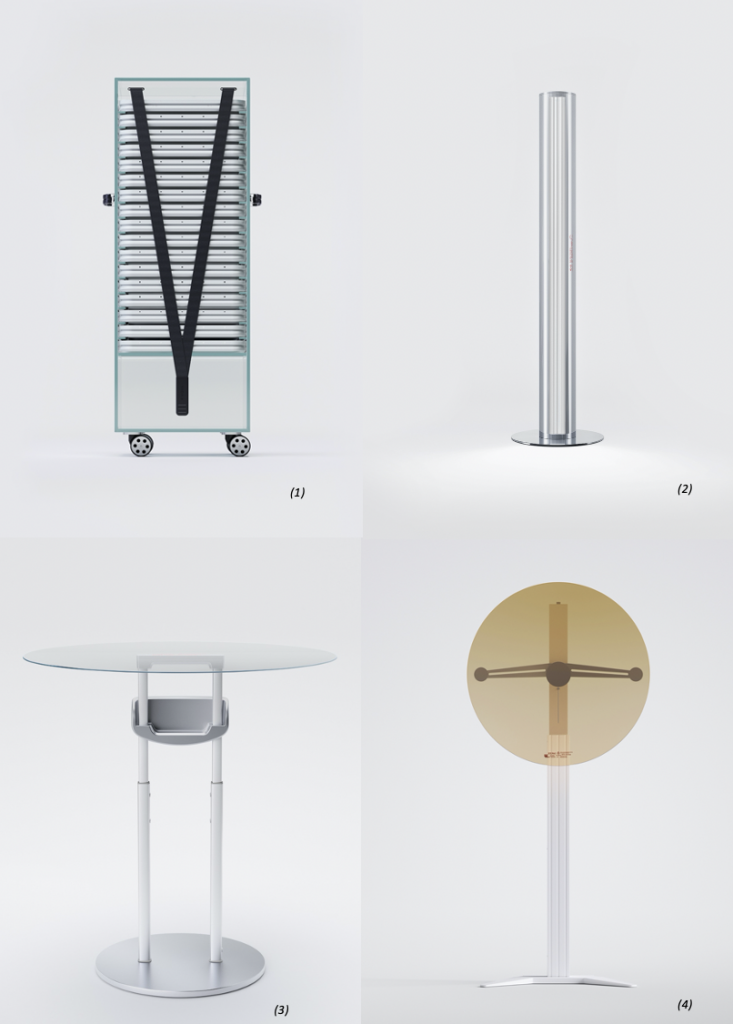Since it was first founded in 1898, Rimowa says that “art and design have played a fundamental role in [its] identity, both informing its distinctive iconography and inspiring leading artists and fashion designers in highly creative collaborations.” With that in mind, the iconic luggage brand recently announced that it is “forging new frontiers as the first luxury travel brand to create a collection of conceptual NFTs designed for the metaverse.” Entitled, “Blueprints from the Metaverse,” the project saw the LVMH-owned luggage brand team up with design firm Nuova to create four physical objects – a table, a food cart, a lamp, and a sound system – each of which were inspired by elements from the 123-year old brand’s “rich design heritage,” such as its signature (and trademark-protected) grooved aluminum paneling.
Once completed, the collection of physical creations – which Rimowa says “explores the idea of future movement through the imaginative retelling of airline memorabilia in new contexts” – was “transformed into digital artworks,” and minted as non-fungible tokens (i.e., NFTs). And as of May 18, the NFTs will be available for auction on community-owned NFT marketplace, Rarible. “To accompany each NFT,” Rimowa says that it will provide “a complimentary piece of memorabilia from the collection, further blurring the boundaries between the physical and digital world.”
Beyond its aim to blur the lines between physical and digital assets in a conceptual sense, Rimowa’s plan to offer up a physical product along with the purely-digital NFT also likely sets the auction up for greater interest. This is something that Benoit Pagotto, one of the founders of NFT fashion brand RTFKT, spoke to recently, saying that many consumers are still on the fence about such relatively novel digital assets, and thus, need that physical element in order to see real value. He told the Wall Street Journal that while the vats majority of RTFKT’s products, for instance, are digital in nature, “We think that emotional bond to physical objects is still important and can increase the attachment” to the design. (That is why RTFKT “hired two former employees of the venerated shoemaker Clarks to fabricate real-world samples of its digital sneaker designs, and will issue tangible versions produced by factories to all NFT-holders,” according to the WSJ.) That same sentiment can likely be said for Rimowa’s offerings, as well.

Speaking to the elephant in the room when it comes to NFTs and crypto, more generally, Rimowa asserts that it “has ensured carbon neutrality for each NFT by offsetting their carbon footprint with a contribution to the Bull Run Forest Carbon Project, a project that protects 4,650 hectares of tropical landscape in Belize.” Given that they depend on a blockchain to operate, “NFTs use a lot of energy,” according to Peter Howson, a Lecturer in International Development at Northumbria University in Newcastle. He notes that “most NFT creators still use Ethereum, a blockchain secured using a similar proof-of-work system to Bitcoin, which involves an energy-intensive computer function called mining.”
While brands like Louis Vuitton and Gucci, for example, have been rolling out digital assets, such as online-only sneakers and/or skins for videos games as a way to drive revenue, but maybe even more importantly, to connect – and build relationships – with digitally-connected younger consumers with the aim of selling them tangible goods, the new Rimowa NFTs mark one of the first endeavors by a luxury brand into the realm of non-fungible tokens. Beating the brand, which was acquired by LVMH in 2016, was Jacob & Co., which auctioned off – and fetched $100,000 for – an entirely-digital SF24 Tourbillion watch in April.











